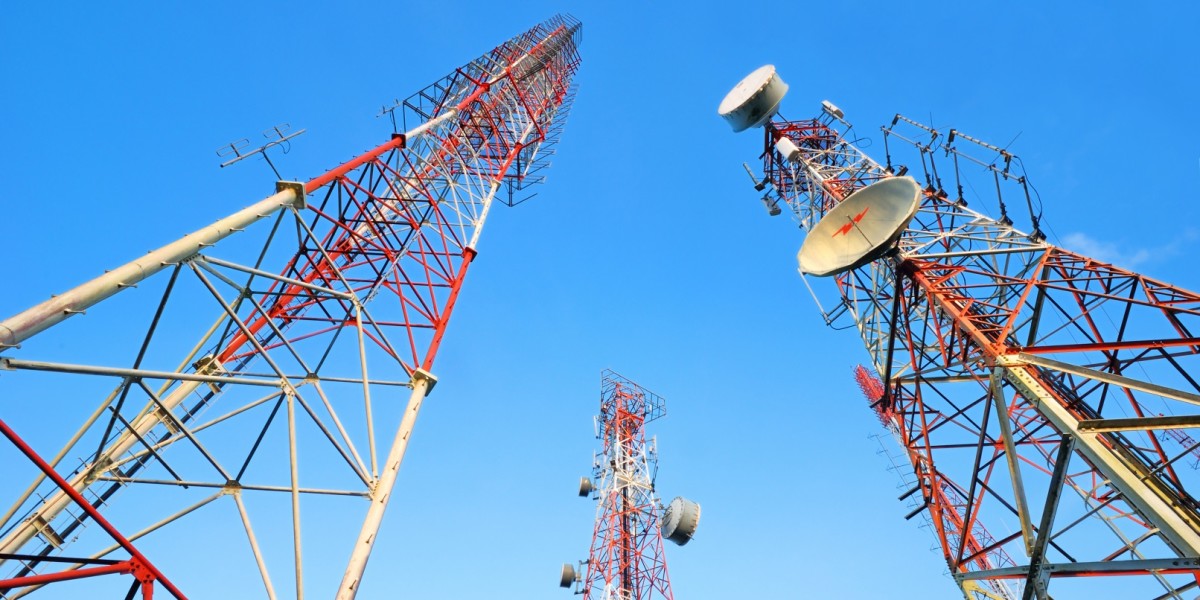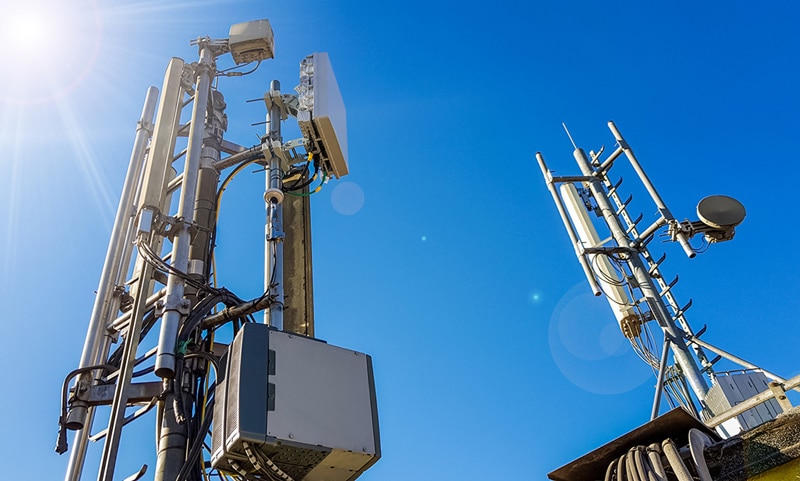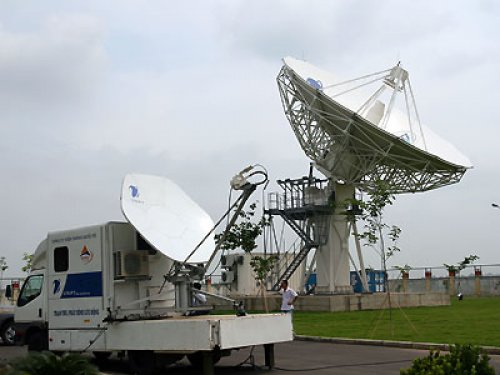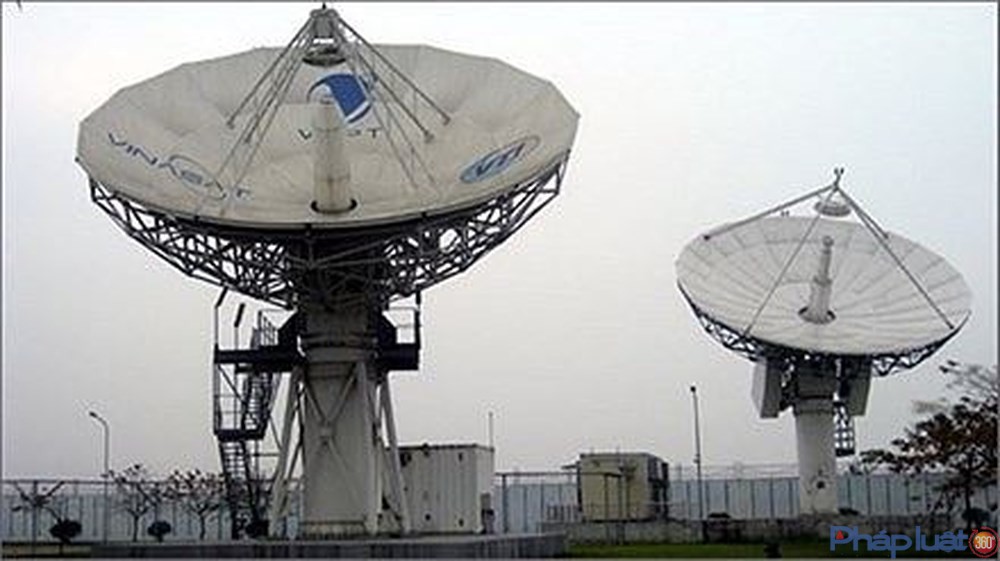Radio frequencies are increasingly being applied widely and play an important role in all areas of social life. The formulation and promulgation of the Radio Frequency Law to regulate management and usage activities of frequencies is an objective requirement.

Chapter I. General Provisions
This Chapter comprises 9 articles (from Article 1 to Article 9) which stipulate the fundamental principles that govern the entire content of the Law such as: scope of regulation; subjects of application; Interpretation of terms; State policies; Contents and responsibilities of state management of radio frequency, Specialist regulatory body; Radio frequency inspection; international cooperation on radio frequency and prohibited acts.
1. Scope of regulation and subjects of application
- This law regulates the management and use of radio frequency, radio devices, satellite orbits, and the management of radio frequency radiation safety, electromagnetic compatibility, as well as the rights and obligations of organizations and individuals participating in the management and use of radio frequency.
- This law applies to state agencies in the management of radio frequency, as well as to other organizations and individuals subject to radio frequency management.
- The term "management and use of radio frequency" is used throughout the content of the Law to refer to: the management and use of radio frequency, radio devices, satellite orbits, and management of radio frequency radiation safety, electromagnetic compatibility; production activities, importing radio devices also fall under the management of radio frequency and radio devices.
- Satellite orbit is closely associated with the use of radio frequency, representing national sovereignty, which needs to be affirmed and regulated in the Law. Therefore, the Law contains a chapter on the registration and international coordination of radio frequency and satellite orbits.
- The Law contains provisions on managing the emission quality of radio frequency, radio devices, and managing electromagnetic compatibility. Organizations and individuals exporting and importing radio devices also fall under the regulation of this Law.
2. Specialist regulatory body for radio frequency (Article 6)
The Ministry of Information and Communications (MIC) is the state management agency for radio frequency. To assist the Minister in performing some state management duties on radio frequency, there is a specialist regulatory body for radio frequency, the Radio Frequency Department, subordinate to the MIC. Some basic functions and tasks of the Radio Frequency Department are:
- Developing the system of legal documents and radio frequency planning;
- Allocating and licensing the use of radio frequency;
- Collecting and paying budget fees for issuing, renewing, amending supplementing the content of licenses, and radio frequency usage fees as prescribed by the Ministry of Finance.
- Controlling frequency, monitoring the operation of radio systems, preventing, and eliminating sources of radio frequency interference.
- Inspecting and handling violations of radio frequency regulations;
- Coordinating, internationally registering frequencies and satellite orbits, protecting international interests on radio frequencies and geostationary satellite orbits. Ensuring the implementation of international commitments on radio frequency that Vietnam has signed or joined.
- Implementing international cooperation tasks in the field of radio frequency as assigned and decentralized by the Minister.
3. International cooperation on radio frequency
International cooperation in the field of radio frequency is extremely important to protect national sovereignty on radio frequency and satellite orbits. The Law stipulates a separate article on international cooperation in the field of radio frequency (Article 8).
An important characteristic of radio waves is their unrestricted propagation concerning national borders. The frequency management aspect often goes beyond border-sharing countries. International coordination on radio frequency and satellite orbits happens regularly, following international legal and technical regulations that are continuously updated and amended in accordance with the rapid development of radio technologies.
Radio frequency management technology is a high-tech field. Despite achieving considerable accomplishments in recent years, Vietnam still lags behind developed countries. Therefore, enhancing international cooperation in the field of radio frequency is essential to improve management and usage levels and to protect national sovereignty and interests.
II. Chapter 2: Radio Frequency Planning
According to the Radio Frequency Law, the radio frequency planning system will include:
- National frequency spectrum planning;
- Band planning;
- Frequency channel planning;
- Channel usage planning;
1. Content of the Planning Types
a) Content of the National Radio Frequency Spectrum Planning
National radio frequency spectrum planning is an overall plan that regulates the use of the radio frequency spectrum for radio services.
The National Spectrum Planning divides the radio frequency spectrum into bands and stipulates which radio services can be used within each band.
In specific bands, the planning can set detailed usage conditions for certain services or specific radio systems. These regulations are often included in the footnotes of the International Telecommunication Union (ITU) or individual country regulations.
b) Content of Band Planning
While the National Spectrum Planning divides the spectrum into bands allocated for certain services, Band Planning details the usage conditions, purpose, and specific segments of frequency bands allocated for a particular radio service or radio communication system. For example, Band Planning for cellular mobile communication systems in the frequency bands of 821 – 960MHz and 1710 - 2200MHz.
For instance, in the National Radio Frequency Spectrum Planning, the 824-890 MHz band is designated for Fixed and Mobile Services: 890 – 915 MHz for Mobile Services as the primary service; 915 - 935 MHz for Fixed and Mobile Services. However, in the Band Planning for cellular mobile communication systems in Vietnam until 2010, the band is detailed further: segments of 882 – 890 MHz/927-935MHz for the national mobile system (HT Mobile), 824 – 829 MHz/869-874MHz for provincial CDMA systems in Ho Chi Minh City, Da Nang, Nghe An, Hai Duong until 2010, and the 851 – 866 MHz band for trunking systems.
c. Content of Frequency Channel Planning
Frequency Channel Planning divides each band into frequency channel groups used for a specific type of radio service according to a defined technical standard system. For instance, in 2009, the Ministry of Information and Communications issued Circular 27/2009/TT-BTTTT, including Frequency Channel Planning and technical conditions and operation for fixed and mobile terrestrial systems in the 30 – 1000MHz band and microwave systems using frequency division duplex (FDD) technology in the 1-30 GHz band.
Frequency Channel Planning aims to establish the order of channel usage, unified standards for radio communication systems, forming the basis for frequency licensing.
Establishing channel usage order is important for enhancing spectrum efficiency and limiting interference.
As it bears a standard nature, Frequency Channel Planning plays a significant role in guiding the production and importation of radio devices.
Example: if the planning defines the duplex spacing for microwave devices in a certain band as 119MHz, production, import, and usage of microwave devices with a different duplex spacing are not allowed.
d. Content of Channel Usage Planning
Assigning and stipulating the conditions of channel usage for a system of a specific type of radio service.
Currently, planning for radio and television broadcasting stations falls under this category. Radio stations are assigned specific locations, broadcasting pre-designated channels with specific conditions on coverage violation, transmission power. In the future, planning may continue for coastal radio stations, radio communication systems serving disaster prevention, etc.
Among the various types of radio frequency planning, National Radio Frequency Spectrum Planning is particularly important, relating to the use of frequencies by various Ministries and Departments. It forms the base for usage direction and investment in radio communication equipment. This planning lays the foundation for the management, allocation, and licensing of radio frequencies and establishing order in radio communication.
2. Principles of Planning Development (Article 10)
a. National Radio Frequency Spectrum Planning is developed based on:
- The regulations of the ITU Radio Regulations for Region 3, where Vietnam is located. Vietnam's planning will not conflict with Radio Regulations.
- The specifics of radio frequency use in Vietnam, reasonably prioritizing new technologies, ensuring information security and national security.
Example: The 890 – 924 MHz band allocated by the ITU to Mobile, Fixed, and Broadcasting services as primary services in Region 3. However, in Vietnam, as the majority of this band is used for GSM mobile systems (Mobile Service), Vietnam's National Radio Frequency Spectrum Planning excludes Broadcasting services and designates Fixed Service as secondary in GSM bands (890 – 915/935-960 MHz).
b. Band Planning:
- There is a need to use that band to deploy a specific system or technology in a widespread (regional or national) range.
- The planning for that system or technology must fit within the National Radio Frequency Spectrum Planning.
- The current usage of that band ensures a minimal cost transition from the current state to the planned state.
c. Frequency Channel Planning is based mainly on:
- National Radio Frequency Spectrum Planning.
- ITU channeling recommendations.
- The current state of frequency usage in Vietnam, ensuring minimal cost transition from the current state to the planned state.
- Meeting future frequency channel usage needs and the capability to apply new technology, being flexible in frequency assignment.
d. Channel Usage Planning: similar to Frequency Channel Planning.
3. Approval Authority and Implementation of Planning
a. The Prime Minister of the Government of Vietnam approves the National Spectrum Planning.
b. Based on the National Radio Frequency Spectrum Planning approved by the Prime Minister of the Government of Vietnam, the Ministry of Information and Communications issues the channel usage planning.
At the national level, the National Radio Frequency Spectrum Planning holds the highest legal status, stipulating the division of the radio frequency spectrum into bands allocated for radio services. The latest National Radio Frequency Spectrum Planning approved by the Prime Minister of the Government of Vietnam is Decision 125/2009/QD-TTg dated October 23, 2009.
Based on the National Radio Frequency Spectrum Planning, the Ministry of Information and Communications will develop and issue Band Planning, Frequency Channel Planning, as well as other relevant legal documents related to the usage, exploitation, and management of the radio frequency spectrum. These plans and legal documents must comply with and not contradict the National Radio Frequency Spectrum Planning.
c. Implementation of Planning
After the issuance of the plans by the authorized levels, organizations, individuals using radio frequency, and related management agencies must comply with the regulations of these plans.
d. Revocation of radio frequency usage rights to implement planning
When a new plan is developed, changing the purpose or subjects allowed to use the bands compared to the previous plan, it is necessary to revoke the radio frequency usage rights granted to organizations or individuals to follow the new plan. Revocation can be partial or total usage right of the band or frequency channels when the license becomes effective. These bands or channels, once revoked, will be reallocated for new purposes or subjects.
Organizations and individuals whose radio frequency usage rights are revoked will be compensated according to the law.
Management authorities, after issuing the plan, must publicly announce the time and plans for frequency and radio device transition and simultaneously notify the organizations and individuals whose license is revoked.
III. Chapter 3. Emission Quality Management, Radio Frequency Radiation Safety, and Electromagnetic Compatibility
This Chapter comprises 3 articles (from Article 13 to Article 15) regulating the management of emission quality and electromagnetic compatibility for radio devices; the management of electromagnetic compatibility for electrical and electronic devices, and ensuring radio frequency radiation safety.
1. Management Forms
a. Publishing inventory of devices
State management agencies publish the list of managed devices. To be specific:
The Ministry of Information and Communications publishes the following inventories:
- List of radio devices capable of causing harmful interference.
- List of radio devices and radio wave applications capable of causing radio frequency radiation loss.
- List of radio devices requiring mandatory inspection for radio frequency radiation safety;
- List of radio devices, telecommunications devices, and IT devices with radio wave applications capable of causing safety loss due to electromagnetic incompatibility.
The Ministry of Science and Technology publishes the following inventory after agreement with the Ministry of Information and Communications:
- List of electrical and electronic devices with radio frequency radiation capable of causing safety loss due to electromagnetic incompatibility.
b. Implementing conformity certification, disclosure of conformity, and usage of conformity marks for devices on these lists
Depending on each type of device, it may have to meet one, two, or all three regulations on radio frequency emission quality, radio frequency radiation safety, and electromagnetic compatibility. Organizations or individuals producing or importing devices listed by the management agency must carry out conformity certification, disclose conformity, and use conformity marks as prescribed.
c. Appointing inspection organizations:
The Ministry of Information and Communications is responsible for appointing qualified organizations respectively so that individuals and entities can perform inspection procedures at one of these appointed organizations.
d. Inspection
The organizations appointed by the Ministry of Information and Communications are responsible for carrying out inspection procedures as prescribed.
When a radio device is installed with an antenna and station ready for exploitation and usage, it must be inspected for emission and radio frequency radiation safety. Inspection here involves measuring and evaluating compliance with radio emission and safety radiation regulations of a radio device system.
2. Management Content
a. Managing radio frequency emission quality
In the radio frequency domain, emission management applies to radio devices.
b. Managing radio frequency radiation safety
Currently, society is highly concerned about the impact of radio frequency radiation on public health. Authorities need appropriate solutions to prevent these impacts. For the first time, the responsibility for managing radio frequency radiation safety is clearly defined in the Law as falling under the Ministry of Information and Communications, not the Ministry of Health or Ministry of Natural Resources and Environment, etc.
The radio frequency radiation safety management applies to radio stations, radio devices, and radio wave application devices.
Radio frequency radiation sources may originate from radio devices or other electric and electronic devices such as high-voltage power lines. The impact level of electromagnetic radiation on human health depends on the frequency, power density affecting the body. Thus, it is necessary to establish and control radio frequency radiation limits to ensure human and environmental safety. Currently, globally, common methods of managing radio frequency radiation safety issues include issuing standards and technical regulations on radiation and mandating the responsibility of organizations and businesses to comply with technical regulations on ensuring radio frequency radiation safety.
Similar to international management methods, the Radio Frequency Law stipulates the responsibility of the Ministry of Information and Communications to issue a list of devices subject to radio frequency radiation safety limit control; establish relevant technical regulations; appoint qualified organizations to appraise radio frequency radiation safety. The Law also defines the responsibility of manufacturers, importers, and users of the listed devices.
c. Managing electromagnetic compatibility
The management of electromagnetic compatibility applies to electrical and electronic devices.
Electrical and electronic devices can unintentionally generate radio waves not intended for communication or other useful purposes (e.g., hairdryers, motorcycle spark plugs, fluorescent lights, etc.). These unintended radio wave emissions may cause harmful interference to other devices and systems within the electromagnetic environment.
There have been instances in Vietnam where high-frequency emissions from nylon pressing machines interfered with television channels in Ho Chi Minh City; interference from fluorescent lights, hairdryers affecting the quality of broadcast receiving devices; water pump station interference affecting the police radio communication network; long-distance telephone interference with the aviation command communication system, etc.
Thus, managing electromagnetic compatibility for electrical and electronic devices is essential.
The Radio Frequency Law stipulates the responsibility of managing electromagnetic compatibility of the Ministry of Information and Communications and the Ministry of Science and Technology; the responsibility of organizations, individuals producing, importing, and using devices listed as having potential safety risks due to electromagnetic incompatibility.
(To be continued)
Source: Baomoi.com
 Article table of contents
Article table of contents










.Medium.png)
.Medium.png)
.Medium.png)
.Medium.png)
